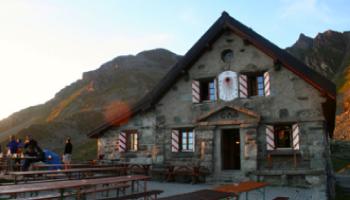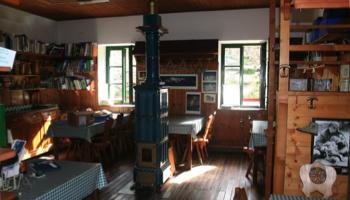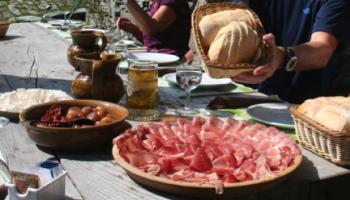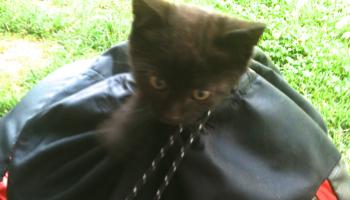
FAQ, trekking trips
We always use professional, certified guides and istructors according to the requirements of the specific itinerary. Our guides and instructors are members of their relevant international associations, whether UIMLA, IFMGA or ISIA. Not only is this a legal requirement in most of the Alpine countries, but it's also your guarantee of a safe, knowledgeable and experienced leader on your trip.
Our leaders are hand-picked and have extensive experience in the areas they visit and operate in. Most of our leaders are our long-time friends and climbing, trekking or skiing partners who, in addition to being incredibly skillful, are great companions in the mountains. Obviously, all our leaders are fluent English speakers.
What is the Accommodation like?
The accommodation is an important part of your trip. We always look for accommodation which is in a great location, whilst offering a friendly and welcoming service and an authentic experience. We aim to strike a balance between accommodation that we feel will fit most peoples taste and keep our trips affordable. The type of accommodation obviously varies depending on whether we're in the heart of an alpine village or high up in the mountains. On our multi-day treks, you'll generally stay in a mixture of hotels, auberges and mountain huts.
In hotel and auberges, we mostly use twin or double rooms although larger rooms and dorms are also used to keep prices as low as possible. Where larger rooms are used, we offer a private room upgrade for those who prefer. There are shower and toilet facilities in all hotels and auberges, but en-suite facilities are not always guaranteed. In hotel and auberges, clean towels and bed linen is provided.
In mountain huts, dorm rooms are the norm. The size of the dorm rooms vary. Dorm rooms are mixed-sex and we may share with people from other groups. In some mountain huts, it may be possible to upgrade to a private room, but not all mountain huts have the facilities to offer that. Clean bed linen and towels ar not provided in dorms so you're advised to bring a light sleeping bag liner and a quick-drying travel towel. In fact, in most mountain huts it's a requirement to use a sleeping bag liner.
What about single travellers and single rooms?
Single travellers are very welcome on our trips. Single travellers will share rooms with other single travellers. On the rare occasion where we're not able to find a suitable room share solution, single travellers may be required to pay a forced single room upgrade fee.
For travellers wishing to have a private, single room, it's often possible to upgrade at an additional cost.
The trip description will clearly state which meals are included and which are excluded. Where meals are included, it's typically provided with the accommodation on a bed and breakfast (B&B) basis or half-board (HB) basis. As a rule, B&B is included when staying in Chamonix or larger villages to allow members to explore the local cuisine in the evening at their leisure. Along the tours, when staying in mountain huts and auberges, half board is the norm.
Meals are provided on a set-course basis and may vary depending on the type and location of the accommodation. Breakfast in hotels are continental-style and typically consist of fresh bread with a choice of jams, cold meats, eggs and cheeses. In addition there are cereals and yoghurts. In mountain huts, breakfasts are a bit simpler. Evening meals are always three courses, often with great local specialities.
Where meals are not included, there is always an option for members to buy meals. When lunches are not included, there will be the possibility to buy packed-lunches and snacks from a mountain hut or supplies from a nearby shop. When dinners are not included, there will be the possibility to visit great local restaurants in the location we're staying.
Vegetarians and people with other common dietary requirements are fully catered for in valley accommodation such as hotels and auberges. When staying in mountain huts, the vegetarian options may be quite basic and other dietary requirements such as gluten-free diets may be limited. Please let us know well in advance if you have any dietary requirements. We're always able to find a solution.
What will I carry in my rucksack?
You'll carry your rucksack with all your personal equipment on the trail every day for the duration of the tour. Lunch packs, snacks and water can be purchased from day to day so you only need to carry enough for a day. Exactly, what you need to pack in your rucksack depends on the type and duration of the tour, your personal preference and whether your trip inc;udes bag transfers. Generally, the less you carry, the more you'll enjoy your time on the hill. For day-tours, a small rucksack of around 25 litre capacity is normally enough. For multi-day tours, we recommend a capacity of around 40 litres. Please see our equipment lists for what to take on your specific trip.
What about my additional baggage?
Any additional baggage that you've got, and that you don't wish to carry on the mountain during your tour, can be stored at the hotel where we meet on the first day. This means, it'll be waiting for you when you return from the tour. For trips starting and finishing in different locations, such as the Haute Route, we can provide baggage transfers from the start point to the finish point.
We appreciate that some people like to be re-united with their additional baggage each night of the trip so we're able to provide bag transfers on most of our trips, Bag transfers are standard on some trips and an additional service on other trips. Please contact us for more information.
Do you provide flights and transfers
We don't provide flights with our trips. People come from all over the world and many choose to lengthen their stay at either end of the trip to get the most of what is often the trip of a lifetime. Some prefer to have full flexibility and choice of airports and flight times, and others have access to special deals or have air miles to redeem.
Airport transfers are not included in our trips. We're happy to recommend reliable, local companies who provide public airport transfers. Alpine Treks can arrange private airport transfers at a very competitive rate. Please contact us if this is of interest.
What's the weather like in the Alps and when should I go?
Summer
Summer is prime time for walking, trekking and climbing in the Alps. Summers in the Alps mostly provide stable, warm weather. The main alpine summer season is from mid-June to mid-September. All the mountain huts and many cable cars are open during this period. In June, the weather is not too hot and there may be snow left on the high trails and passes. The main European holiday season has not yet begun so the mountains are still fairly quiet. July and August are by far the busiest and have the warmest and most stable weather. It's not uncommon that temperatures exceeds 30C. In September, things get quieter again and the temperatures get cooler. Of course, there's never any guarantee when it comes to weather in the mountains and we've seen snow storms in the middle of August!
Spring and Autumn
Spring and Autumn are seasons of change, but are certainly not to be avoided. In fact, Spring and Autumn can be a fantastic time in the Alps. In contrast to the busy summer season, Spring and Autumn are much quieter and both seasons offer something quite unique. In Spring, we enjoy watching nature come to live after the snowy winter season; the early alpine flowers are blooming and animals such as the marmot awake from hibernation. In Autumn, the colours and the light is simply breathtaking and the cool, crisp air completes the experience. The temperatures vary, the mornings and evenings are cool, but the days can be very pleasant with temperatures as high as 20 C. We may get some rain, and there may even be the odd dusting of snow high up. Cable cars and mountain huts do not stay open Spring and Autumn, so for practical reasons, we can't run many of our trekking tours in Spring and Autumn.
Winter
Winter is a magical time in the Alps and it's the time for skiing and snowshoeing in the Alps. The winter season is generally from December to April, with some ski touring continuing into May. December and January are the coldest months and the days are shorter. Temperatures drop to as low as -15C at valley level, but dry air and frequent sunny days help a lot. The majority of the snow comes in this period and is of the lovely, light and fluffy variety! February, can still be very cold but the weather gradually gets warmer and the days longer. February still provides very good snow, including the fluffy, powdery stuff. March and April are generally the sunniest and warmest. It's not uncommon to wear little more than a t-shirt in the warm sun. The snow pack is at it's deepest in the mountains and has started to compact and get firmer. the snow gets wetter during the day and starts melting at lower elevations. All cable cars are running in the main winter season and some mountian huts open for snowshoers and ski tourers.
Will the itinerary of my trip change?
Our trip itineraries are popular and well-proven and we aim to follow them on each trip. However, on our guided trips, we're able to keep some flexibility in the itinerary, in order to match it as closely as possible to the group members’ abilities as well as uncontrollable factors such as weather and mountain conditions. Our leaders have extensive local knowledge and will always be able to find suitable alternatives on very short notice. For instance, if the normal trail on a Tour du Mont Blanc trip is unsafe due to snow fall, your leader will find another, safer, route to your destination. If unforeseen circumstances neccessitates a significant change in the itinerary, which requires changing accommodation and/or using un-planned transport, members may be required to contribute financially. Please keep an open mind and do not hesitate to discuss particular wishes with your leader who will try to accommodate them.
On self-guided trips, we're not able to change itineraries, accommodation bookings etc.
Should I choose a Private or Scheduled Group trip?
Our scheduled group trips are open for all to join. Joining a group trip is a great way of meeting other trekkers and is more cost-effective if you travel as an individual or small group.
A private trip offers additional flexibility. You can choose the dates of your trip to suit your schedule and you're completely in control of who is in your group. During the trip you'll be going at a pace that suits you, so there's no need to worry about keeping up or being slowed down. This makes private trips particularly popular with families and groups of friends.
Should I choose a Guided or Self Guided trip?
A SELF-GUIDED trekking tour is a hassle-free way of undertaking a trekking tour independently and without a guide or leader. On a self guided trip, we plan your itinerary, book and pay for your accommodation and provide maps and route instructions and other practical information. You then undertake the actual trekking independently, in your own company and at your own pace. If you're an experienced mountain walker who knows how to navigate and who prefer to undertake a trekking tour under your own steam, but don't have the time or the inclination to deal with the planning and booking, this may just be the perfect type of trip for you.
It's important to be aware, though, that on a self-guided trip you're on your own; there are no one to ask if you're in doubt about the navigation or to support you on wet, steep and/or technical terrain. There's no one to help if you have an accident or need help with the language in the mountain huts or with other practical issues along the tour. In good weather, when all goes well, this is not an issue, but you need to consider what to do in the case of bad weather, if you get caught out in the darkness, if there's a lot of snow, land slides or other issues with the trail conditions etc. If you're uncertain about these issues, a GUIDED trekking tour or walking holiday may be better for you.
A GUIDED trekking trip is by far the easiest, and safest, way of completing a tour in the Alps. There is no need to worry about route finding, safety, trip planning, booking accommodation etc. You just show up, walk and enjoy.
Your guide will know the area well and will be able to change the route on short notice to suit the group and in case of bad weather, snow, land slides and other unforeseen circumstances. In addition, you have the benefit of being in the company of a knowleadgable leader who can add value to your trip by sharing his/her knowledge about the history, geology, flora and fauna of the areas you visit. It is also comforting to have a leader who knows the language and many of the owners of the mountain huts and hotels along the tour, which often leads to a better experience (and bigger meal portions!).

The Cabane du Mont Fort on the Haute Route

Inside a traditional Italian Alpine Club hut on the Gran Paradiso

Traditional alpine lunch enjoyed along the Tour of Monte Rosa

Evening meal at Hotel Chemenaz on the Tour du Mont Blanc

Consider what you pack as you need to carry it!

Bridges on the Haute Route get damaged, leading to de-tours




